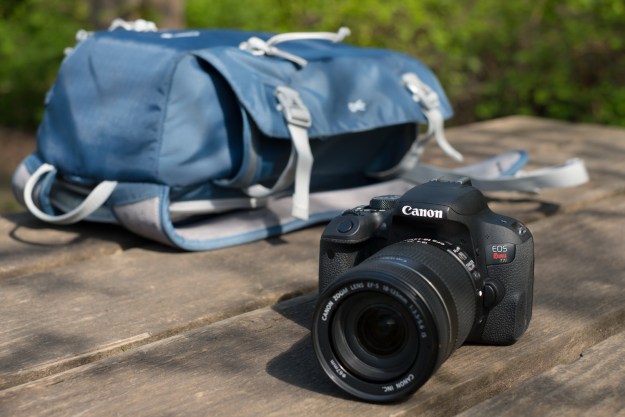StormStock owner Martin Lisius has a long-standing fascination with the sky — when he was a kid, he built a weather-station on his roof. At age 12, he created a supercell replica from cotton and shot his first storm photo out the kitchen window. But the producer, director, cinematographer, and storm chaser has now built a DIY project that goes far beyond his childhood science fair: a custom 16K camera rig.
No, you didn’t miss the announcement for a new 16K camera; cameras are still catching up to 4K, and 8K has only just begun to enter the popular lexicon. Lisius used his rig to create the short film Prairie Wind (above), a 4-minute supercut of supercells. Although shot in 16K, the highest resolution available on Vimeo is 8K — but it’s unlikely you own a screen capable of displaying it even at that.
“I wanted to try something different, something more immersive.”
To reach such a high resolution, Lisius’s custom rig holds two Canon EOS 5DS DSLRs at the exact position needed to properly overlap the files to stitch together in post, creating a wide aspect ratio with a dizzying amount of pixels. The 5DS is the highest resolution full-frame DSLR available, with a 50-megapixel sensor that captures images that are 8,688 pixels wide; two of them together doubles that horizontal resolution, with just a few pixels left to overlap for a seamless stitch. The functional rig also stands out thanks to the cherrywood board that supports the camera mounts.
“I’ve captured hurricanes, tornadoes, and lightning on Super 35mm motion picture film, [digital] 4K, and even 3D,” he said. “I wanted to try something different, something more immersive. I knew I could build a 16K camera system, I just didn’t know how good the results would be until I tried it.”

After testing the design of the custom mount, Lisius then went storm chasing, driving from Texas to Nebraska shooting a series of stills capturing developing supercell storms. In August, Lisius started stitching, assembling each image into a 15,985 x 5,792 pixel file. With the largest set containing 700 images to stitch, a single 23-second clip took at least two days to assemble — if he didn’t run into any problems.
While working with 16K is hard enough, the technology to actually view something at that resolution isn’t really around yet. Aside from multi-display setups, there is only one screen in the world capable of showing 16K content. The problem is a modern-day chicken-and-egg question — which came first: 16K content, or 16K displays?
“Why did I shoot 16K? The first reason is because I just wanted to see if it could be done,” Lisius said. “So, it was a technological challenge for me. Second, I wanted to see what possibilities it offered, to explore and see what I could do with it. What I found is that it offered me a massive canvas to work with in post-production. I was able to zoom, pan, and tilt on an 8K timeline which is what I edited with.”
The 16K files made for greater flexibility in post, allowing Lisius to zoom, pan, or create fly-in effects when editing to a 4K or 8K video. Even the file down-sized to accommodate Vimeo’s 8K limit has added sharpness, he says.
Capturing 16K before the technology for 16K actually existed presented a number of different challenges, besides actually designing the custom rig. Some footage was discarded because of stitching errors. “The biggest challenge was stitching and dealing with the huge files. I had a very tiny operational window I could shoot in. Everything had to be perfect. And the files were crazy large. Stitching, coloring, and rendering was very, very slow.”
In his research, Lisius said he hasn’t come across another video project at 16K resolution, suggesting his film could be the first shot entirely in 16K. Aside from requiring two cameras, reaching such a high resolution was also only possible with time-lapse photography, which uses a series of still photos rather than a camera’s video mode, which is much lower resolution. Single-camera, realtime 16K video is still a ways away; some industrial inspection cameras can reach 16K, but cameras from professional cinema companies like RED top out at 8K.
Prairie Wind can be viewed in 8K at Vimeo, or on YouTube in HD.





